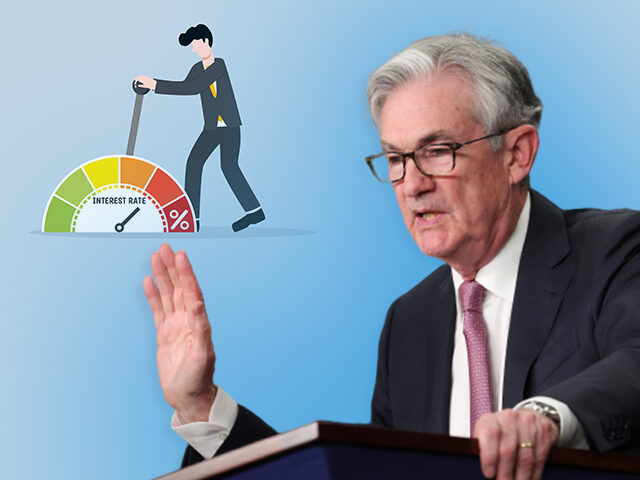CPI Points to a Pause
Federal Reserve Chairman Jerome Powell will get his pause.
The Labor Department’s consumer price index (CPI) rose just one-tenth of a percentage point in May, slightly less than forecast, largely due to a fall in energy prices. Compared with a year ago, prices are up four percent, the lowest inflation read in two years. That’s likely enough to make Federal Reserve officials comfortable with putting rate hikes on pause at the next meeting.
More troublingly, core inflation continues to run hot. Core CPI rose 0.4 percent in May, where it has been since December. Unrounded core inflation has actually been ticking up for two months. This suggests that the Fed has not made very much progress on bringing down inflation.

Energy prices tumbled 3.6 percent for the month and are down 11.6 percent compared with May of 2022, providing relief to households but also likely fueling spending elsewhere in the economy. Gasoline prices dropped 5.6 percent in May and are down 19.7 percent year-over-year. Energy services prices fell 1.6 percent for the month, the fourth consecutive decline. This was largely driven by a fall in piped natural gas prices.
Food inflation, on the other hand, accelerated. The prices of groceries rose by one-tenth of a percentage point, ending two straight months of falling prices. Prices of fruit and vegetables rose 1.3 percent. This was partially offset by declines in prices for meats, poultry, fish, and eggs. Bread prices climbed higher, raising their year-over-year gain to 12.5 percent.
Dining out also got pricier. The Labor Department’s measure of “food away from home” jumped 0.5 percent, for a year-over-year gain of 8.3 percent. This is likely driven by restaurants passing along increased labor costs. Fast food prices rose faster than full-service restaurant prices, also likely a reflection of labor costs.
Used Car Prices and Rent Driving Inflation
Used car prices rose sharply, as telegraphed by the rise in wholesale auction used car prices earlier this year. Excluding used car prices, core CPI was flat for the month, down from a 0.6 percent increase in April. This reflects a decline in demand for goods as well as better functioning supply chains. China’s reopening may also be contributing to disinflation, particularly in categories like furniture, which fell 0.7 percent, the second consecutive monthly decline.
Shelter costs are also driving inflation, although the pace is decelerating. Rent and owner’s equivalent rent increased by 0.5 percent in May compared with April. Over the last three months, these have averaged 0.5 percent month-over-month. The three-month annualized rate of change for rent is 6.3 percent, down from 7.4 percent. The three-month change in owners’ equivalent of rent dropped 0.7 percent to 6.4 percent.
Median CPI Isn’t Falling
As we’ve argued in the past, we think that median CPI is the best guide to forecasting where inflation is going. The Cleveland Fed said Tuesday that median CPI came in at 0.4 percent in May, exactly where it was in March and April. This suggests that underlying inflationary pressures are not easing by very much at all.
The Cleveland Fed’s 16 percent trimmed mean inflation metric ticked down to 0.2 percent on a month-0ver-month basis, down a tenth from April and equal to the March reading.
Given the stubbornness of inflation and the extremely tight labor market, the Fed should probably stick to hiking rates. Unfortunately, the Fed is most likely going to “skip” this meeting and hold rates steady. Jason Furman’s view seems right to us.
That said, a hawkish “skip” is unlikely to be very consequential. The Fed can probably afford to hold rates steady for a month or two without sending inflation higher—so long as it successfully communicates the message that there are more rate hikes ahead. If Powell falters on this, he may end up reigniting inflation.

COMMENTS
Please let us know if you're having issues with commenting.